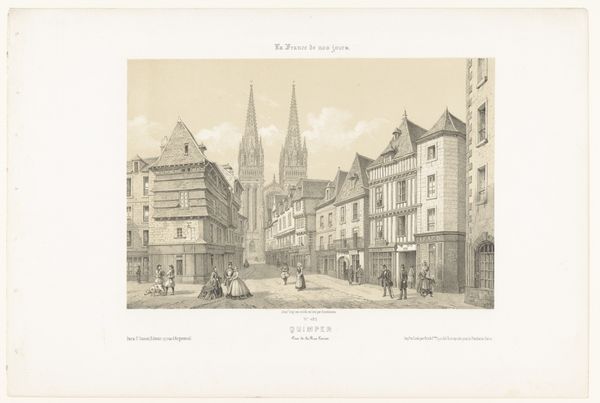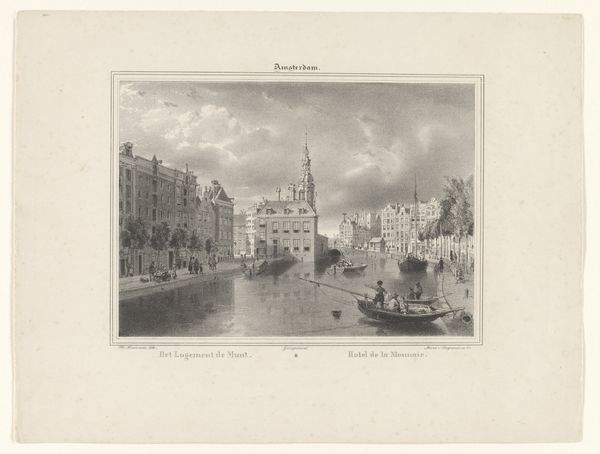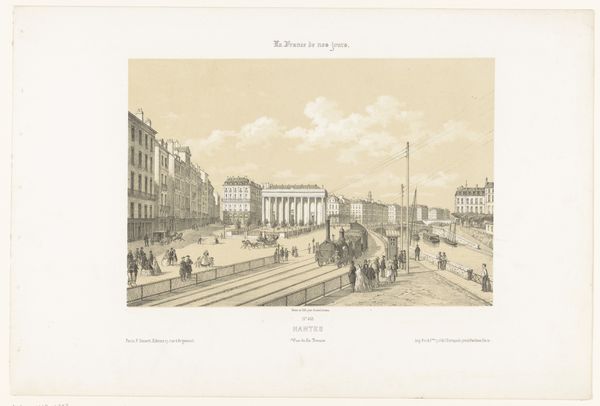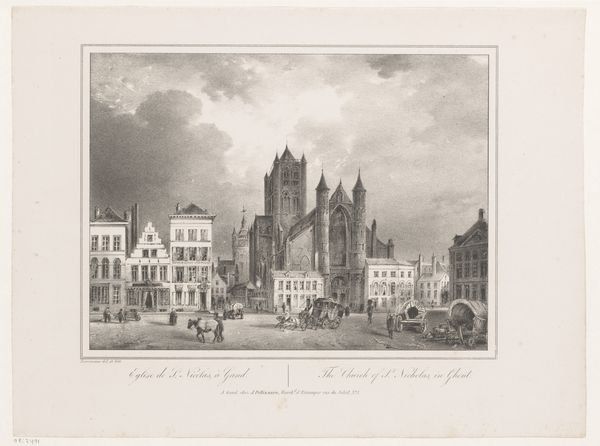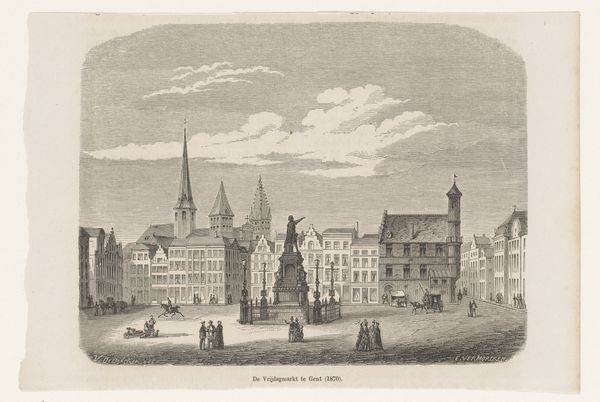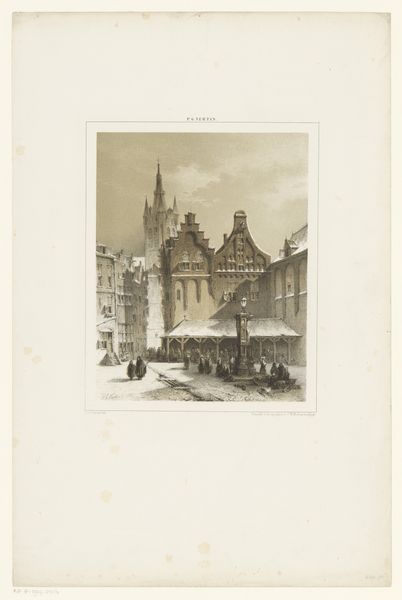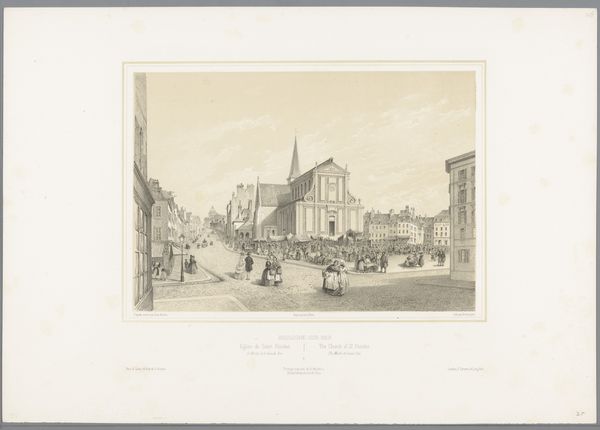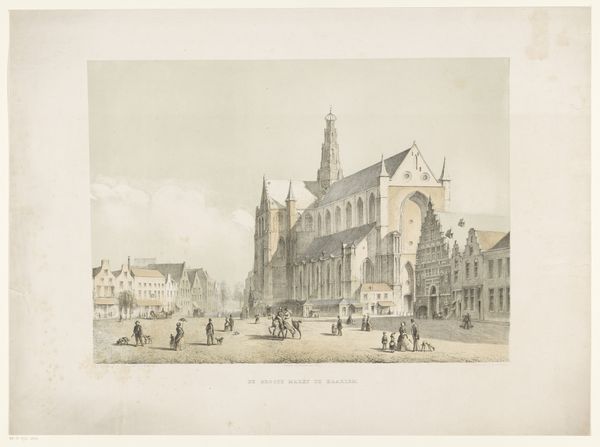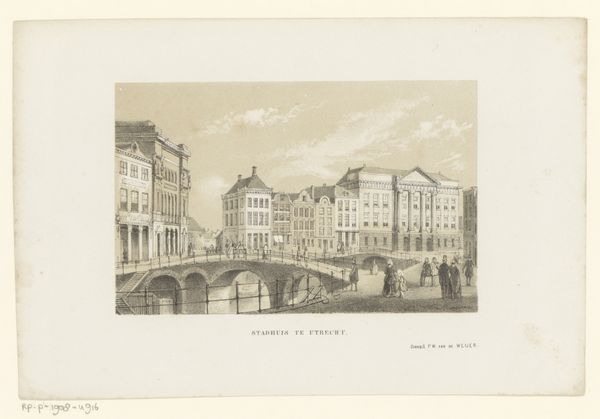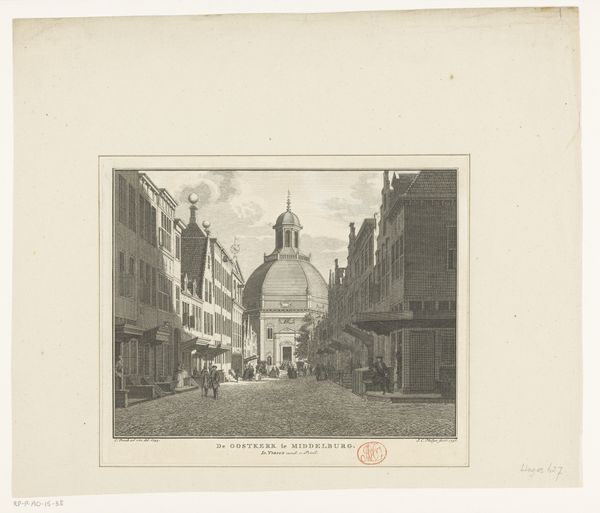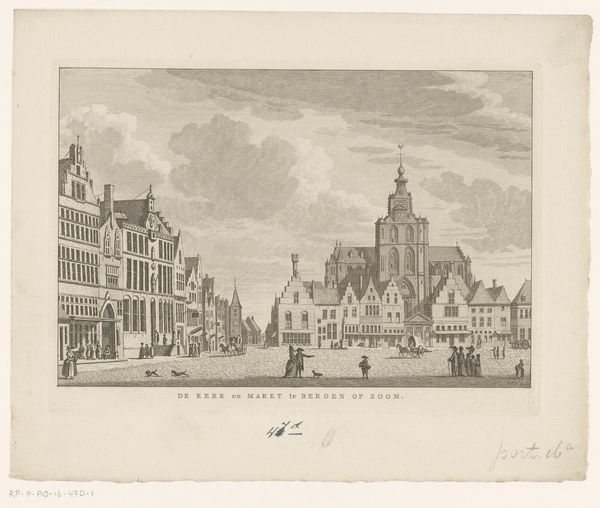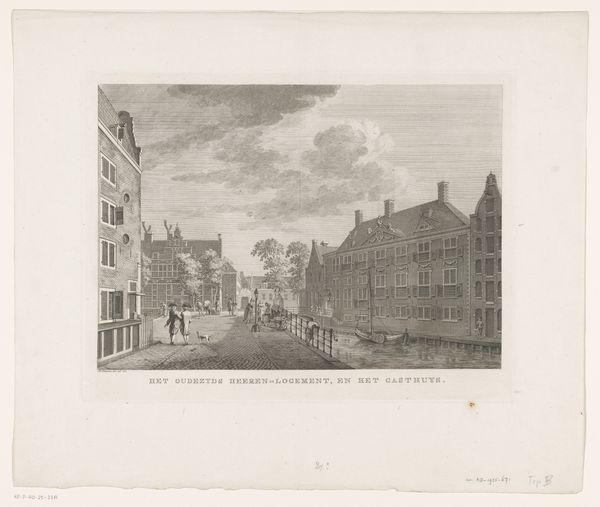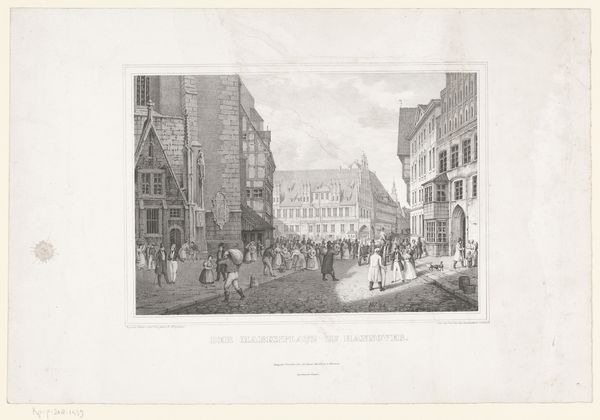
print, photography, engraving
#
neoclacissism
#
16_19th-century
# print
#
landscape
#
photography
#
cityscape
#
genre-painting
#
engraving
#
realism
Dimensions: height 291 mm, width 432 mm
Copyright: Rijks Museum: Open Domain
Curator: What strikes me immediately about this print is the serene formality. A calm public space, orderly architecture… It feels like a portrait of power. Editor: Indeed. This is a print entitled "Zicht op de Place du Martroi in Orléans" by Léon Auguste Asselineau, created between 1853 and 1856. The Rijksmuseum holds it now. Thinking about France in this period—it’s a time of significant social and political change. How does this artwork fit within that context, do you think? Curator: Given that it's a period piece, one can see elements reminiscent of the neoclassicist influence. Order, civic pride—yet with a certain romanticism, especially in the light and airiness. We must ask, however: whose vision of Orléans is this? Are the people truly represented in this formal setting? It certainly highlights the bourgeois ideals, seemingly ignoring other realities. Editor: What resonates is how this print employs familiar symbols to communicate a sense of civic identity and historical continuity. We have the equestrian statue in the center of the plaza, the implied reference to Joan of Arc, alluding to the resilience and spirit of France. This place wasn't just any square. It served as a nexus of communal experience, echoing through generations. Curator: That resonance you feel might mask underlying tensions. The meticulous detail in the buildings versus the generalized depiction of the people reveals, perhaps unconsciously, a societal hierarchy. Who is deemed worthy of precise representation, and who isn't? We can even look at how gender dynamics are captured, considering how women might experience a public space. Editor: Absolutely. These layered readings are enriching. When you mentioned hierarchy, I instantly thought about scale, how the towering cathedrals establish a specific emotional tenor within the cityscape—beckoning a connection with something transcendent, while simultaneously reinforcing institutional presence. Curator: It encourages us to think critically about the stories embedded within visual representations, revealing perspectives but also possible elisions of complex social realities. This piece functions as a historical document that calls to be interrogated in that way. Editor: Right! Art can both mirror its age and speak to perennial elements of identity and collective aspiration. This deepens my appreciation considerably.
Comments
No comments
Be the first to comment and join the conversation on the ultimate creative platform.
